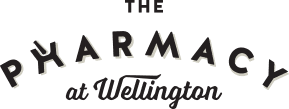Neuroscientific tips for learning
Learning strategies based on what science knows about the brain*
The nervous system has been studied since ancient Egypt, and it has only been since the 1900's that neuroscience became a distinct academic discipline. Today, what neuroscientists have learned about the brain can be applied to learning, and who wouldn't want to try to learn better and faster?
How the brain functions, an analogy
Let's say we want to get to a spot in the middle of the jungle. There's a lot of vegetation so we clear the way with a machete. If we want to go back the next day, the path is already cleared and it's easy to go back. If we don't go there for a year and then go back, we have to clear the way again because the vegetation has grown back.
Memory works in the same way. The paths are how neurons communicate (via synpases) and they allow us to easily access information that we've saved. The first communication between two neurons is weak and we have to maintain the path, or revisit the information, so that the path gets stronger. A path that is used often is easier to access. One that is not used often or not used for a long time takes more work to access.
If we cram before an exam, we might remember the material for the test, but it might be very difficult to access the material later, for example when it's needed for a subsequent level course.
What are some strategies?
Spaced repetition - This is where a concept is reviewed at regular intervals rather than reviewed multiple times in one sitting.
Interleaving - Switch back and forth between different learning techniques (such as self-testing, reading, explaining the concept, recalling, etc.) and between different topics. Pick up studying at different points of the material.
Pomodoro - Study and focus for 20-25 minutes, take a 5 minute break, study for 20-25 minutes, etc. This technique helps to build the ability to focus and relax.
Diffuse mode - Take a nap! Every so often, after intense study and in the focused mode, the brain needs some diffuse mode time and the ultimate diffuse mode is sleep. Taking a break, doing something relaxing, getting some physical exercise, etc. puts our brain in diffuse mode, when it consolidates the information. To note: naps don't replace studying, they're complimentary and used to solidify information.
Physical activity - There are neurotrophic factors called BDNF in the brain that promote the growth of neurons. Physical exercise produces BDNF in the brain and improves memory and neuron connections, thus helping with retaining learned material for the longer term.
Memory palace - Think of a familiar place and associate concepts with things in that place, so that you can remember those concepts more easily. A similar idea is to connect concepts with smells or tastes, using a mental map. If a certain scent (essential oil, perfume, cologne, etc.) is used during studying, use the same scent during the test.
Chunking - Associate a group of concepts together so that there are already connections between them. When the information is recalled, we can recall the whole chunk.
Space out learning - Over at least several days, to give time for the new synapses between neurons to form.
Eat your frogs first - Start the most difficult work first. You can either finish it or take a break and let your diffuse mode help you.
Lifelong learners
Each learner will need to find the strategies that work best for them because each individual is different. We hope that these tips might not only help the younger learners, but also the adult learners out there!

*While we're not experts in this area, we are lifelong learners ourselves. We're also fans of the Massive Open Online Course (MOOC) called Learning How to Learn, taught by Barbara Oakley. And we sincerely hope that some of these learning strategies will help students as they enter the final sprint to the end of the school year.
Resources and References:
- Barbara Oakley, PhD on Learning How to Learn - https://barbaraoakley.com/
- Barbara Oakley, PhD on 10 top ideas and 10 pitfalls - https://barbaraoakley.com/wp-content/uploads/2018/02/10-Top-Ideas-to-Help-Your-Learning-and-10-Pitfalls.pdf
- Wikipedia on Brain-Derived Neurotrophic Factor - https://en.wikipedia.org/wiki/Brain-derived_neurotrophic_factor
- Radio-Canada on learning better thanks to neuroscience - https://ici.radio-canada.ca/ohdio/premiere/emissions/les-annees-lumiere/segments/reportage/439426/apprendre-etudiants-mcgill-scilearn-programme-neuroscience-cerveau
- McGill University Scilearn program - https://www.mcgill.ca/ose/initiatives/scilearn/scilearn-events
- Wikipedia on neuroscience - https://en.wikipedia.org/wiki/Neuroscience





